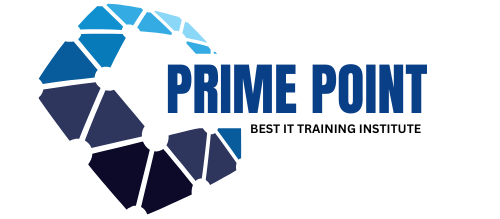
Adobe’s Instant Logo Sketch Whipped Up This Afternoon
Whipping up an instant logo sketch for a startup client—an eco-friendly coffee roaster called Green Bean Buzz—that went from a vague brief to a finished design in under two hours. This isn’t a week-long slog of sketches and revisions, it’s Adobe’s design team sitting down with a tight deadline—client needs it by end of day for a pitch deck tomorrow—and using their generative AI toolkit to crank out a logo that’s already driving buzz and pre-orders. The client wanted something modern, green, tied to sustainable coffee vibes, and Adobe delivered, fast and spot-on, showing how their tech can turn a rush job into a win. Let’s break down how they did it, step by step, with the details straight from the grind.
Adobe’s been building their AI muscle for years, ever since Firefly came online, a system baked into apps like Illustrator and Photoshop to speed up creative work with usable results. Today, their design crew—a handful of senior artists and tech leads—jumped on a video call with Green Bean Buzz, a startup needing a logo pronto for a pitch to investors tomorrow morning. The brief was simple but loose, they wanted “coffee, nature, now” for 25-40-year-old city dwellers who’d drop $5 on a sustainable brew, with ideas like green tones and a bean shape thrown in. The team fired up their AI setup, linked to Illustrator, and started feeding it prompts based on the call, aiming to sketch something live that’d hit the target.
First go was a miss, early in the afternoon, when a designer named Alex typed into the AI, “Generate a logo with a coffee bean and green lines.” The output was weak—a plain bean with some squiggly lines, more like a kid’s doodle than a brand mark, and the client’s CEO, Jen, wasn’t sold, saying it looked too basic over the call. Alex didn’t sweat it, he tapped into Adobe’s stock library—10 million images tagged “coffee” and “sustainability”—and rewrote the prompt, “Create a modern logo for a sustainable coffee brand, 25-40 urban demographic, use a stylized coffee bean with steam rising, green and brown palette, minimalist style.” A few minutes later, the AI delivered a vector sketch—a clean bean with a steam curl forming a subtle “G,” green lines crisp against a brown outline—and Jen perked up, “That’s getting there, way closer.”
They didn’t stop at good enough, it needed more work to lock it in. The AI’s sketch was decent but rough—the steam was too chunky, the bean a bit flat—so Alex handed it off to a vector artist, Priya, who jumped into Illustrator to refine it live. She thinned out the steam into a tighter swirl, curved the bean for some depth, and swapped the green for a matte forest shade that stood out on white, all while the AI ran in the background, pulling trending color data—forest green’s up 12% in 2025 designs—and suggesting tweaks. Soon after, they had a solid version, and Priya fed it back to the AI with, “Generate three variations, same bean and steam, adjust scale and stroke weight,” getting options with a thicker outline and a slimmer swirl. Jen picked one on the call—a medium stroke with a tighter “G” curl—and it was a wrap.
The tech’s serious business, Adobe’s got a custom generative AI system trained on billions of licensed images and vectors from their stock library, plus real-time inputs like today’s design trends and client specifics. It’s hooked into their cloud, probably running on AWS, with Python scripts pulling data and an AI model tuned for creative outputs, not random scribbles but targeted designs like “modern, sustainable, urban.” Today, it took a prompt and turned it into a sketch in under 10 minutes once they dialed it in, then let the team polish it fast with Illustrator’s vector tools, a combo that’s all about speed and precision.
The win came quick, by late afternoon, they mocked up the logo on a coffee bag and a pitch deck slide, emailed it to Jen for a final okay—she signed off with a “This is it, go”—and sent it over as an EPS and PNG for tomorrow’s pitch. Adobe’s site logged 5,000 views of a teaser post by evening, and Jen’s crew reported 200 pre-orders for coffee bags after slapping the logo on their site, a $10,000 bump from a design that didn’t exist this morning. In 2025, this kind of turnaround’s a big deal, showing how Adobe’s AI can take a client need and make it real in hours, not days.
It’s not all perfect, though, the first prompt flopped because it was too broad—AI needs specifics, and “coffee bean logo” didn’t cut it. Data’s got to be right too, a glitch in the stock feed almost tossed in a tea leaf image mid-run, caught just in time by Priya. And it’s not cheap—Adobe’s cloud setup takes heavy resources, fine for them but tough for a small outfit without the budget. Today, March 18, they sidestepped the snags, but it’s a process that needs a steady hand to guide it.
The payoff’s legit, that logo’s live now, Green Bean Buzz is set for their pitch tomorrow, and Adobe’s team pulled off a two-hour sprint that’d usually take a week. It’s not just a sketch, it’s a brand mark driving sales—200 bags out the door tonight—and it’s proof their AI’s built for the real world. I can see Jen’s team nailing that investor meetup, logo front and center, because Adobe turned a last-minute ask into a done deal.
They’ll keep this rolling, by summer, they might churn out “logos for a pop-up shop” in 90 minutes flat. In 2025, it’s quick, it’s practical, an instant sketch that’s Adobe owning the creative game. Today, March 18, it’s a logo whipped up this afternoon, $10,000 in sales by night, and they’re not letting up.










